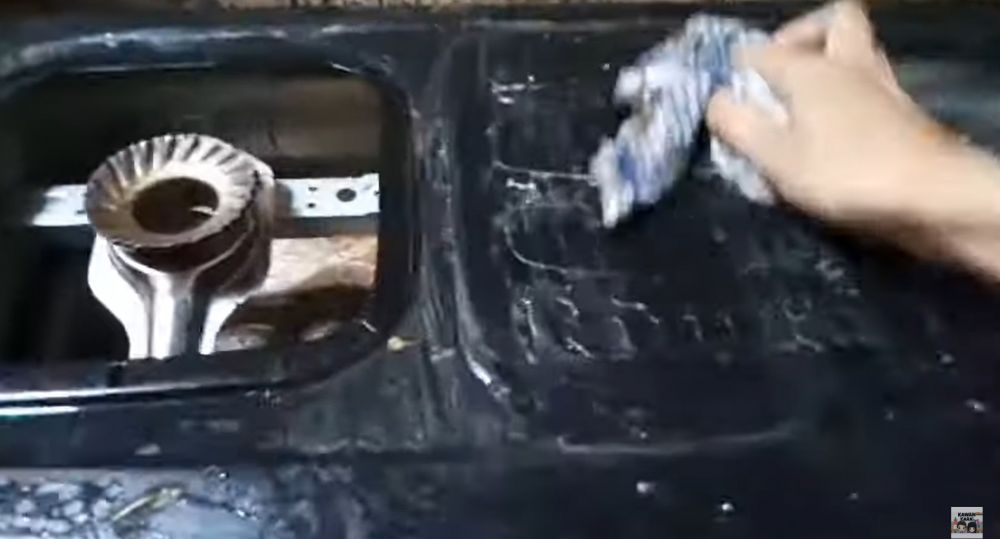YouTube/Ahmad Fauzi
Brilio.net - For those who like to cook, a stove is quite an important piece of equipment. Yup, this tool is used to cook food ingredients. Because it is used for cooking almost every day, the stove is susceptible to getting dirty and stained.
These stains and dirt usually come from food spilled onto the stove. Apart from that, oil splashes also often cover the surface of the stove, making it look dirty and dull .
If oil stains on the stove are not cleaned immediately, over time the surface of the stove can become moldy, you know. The stove is no longer hygienic for cooking. It would be a good idea for you to immediately clean the stove, OK?
Some people choose to add baking soda to clean oily stoves . This is because baking soda is believed to absorb oil, so that stains on the surface of the stove will lift and fade.
But if you don't have baking soda in stock, there are still other tricks you can try. The same thing was shown by YouTube user Ahmad Fauzi. He claims he can clean oil and mold stains on the stove without baking soda. He only relies on simple ingredients he has at home.
The trick for cleaning oil and mold stains on the stove is simply adding 1 kitchen ingredient.
After investigating, the material used was porcelain cleaning fluid. Apart from that, he also added 1 kitchen ingredient, namely dishwashing soap. This kitchen ingredient will later be used to remove oil and mold stains on the surface of the stove.

photo: YouTube/Ahmad Fauzi
First of all, prepare two rags. Then wet one of the rags with water. If so, rub the wet cloth on the dirty and dirty surface of the stove. After rubbing, the appearance of the rag turns brown. Next, rinse the washcloth.

photo: YouTube/Ahmad Fauzi
After the rag was rinsed, the YouTube user poured enough porcelain cleaning fluid onto the surface of the stove. Then the stove was scrubbed again using the wet rag.
"Let it sit for a while, then rub it again. This can clean germs," he said, quoted by BrilioFood from YouTube Ahmad Fauzi on Monday (29/4).

photo: YouTube/Ahmad Fauzi
After scrubbing with porcelain, the YouTube user scrubbed the stove surface again using dish soap. He was seen pouring enough dish soap onto a rag.
"We pour enough. Its function is to clean the remaining porcelain liquid so it doesn't damage the stove. Rub dishwashing soap all over the surface of the stove. Rub it evenly," he added.

photo: YouTube/Ahmad Fauzi
Apart from cleaning up remaining porcelain liquid that sticks to it, dishwashing soap also functions to make the surface of the stove cleaner, fragrant and rougher. After scrubbing, wipe the stove using a dry cloth.
As a result, the stove which was initially covered in oil stains and mold is now clean and bright again. That way, the stove is ready to be used for cooking.
"Clean like new, right," he concluded.
How to prevent mold from growing on the stove.
To prevent mold from appearing on the stove, there are several steps you can take.
1. Clean regularly.
Make sure to clean the stove regularly after use. Food scraps or oil left on the surface of the stove can be a good place for mold to grow.
2. Dry well after cleaning.
After cleaning the stove, make sure to dry it well. Mold usually grows in damp places, so make sure there is no moisture left on the surface of the stove.
3. Avoid dirt buildup.
Avoid piling dirt or food scraps around the stove. Make sure to clean the area around the stove regularly to prevent mold from growing.
4. Pay attention to ventilation.
Make sure the stove has good ventilation to avoid moisture buildup around it. Good ventilation will help keep air circulating and reduce the risk of mold growth.
5. Use the cover when not in use.
If possible, use a cover to cover the stove when not in use. This will help prevent dust, dirt, and moisture from entering which can cause mold growth.
6. Check airtightness.
Make sure the area around the stove is well airtight. If there are air leaks or gas leaks, it can cause excessive moisture and increase the risk of mold growth.
7. Use antifungal agents.
You can also use anti-fungal agents periodically around the stove area to prevent mold growth.
(brl/lut)